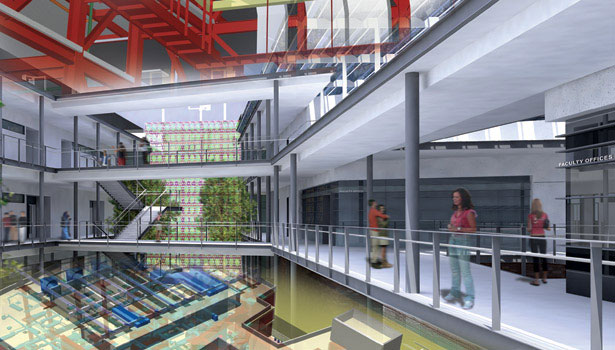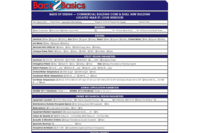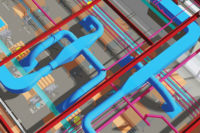At some point, most college or university building committees are given the responsibility to establish a building upgrade program to enhance their campus and appeal to potential future students. When ready, a Building Program (BP) will be the cornerstone for investing in an HVAC design and eventual construction of HVAC systems to meet the Building Program requirements.
For the HVAC engineer, he will take the Program information and craft a Basis of Design (BofD) using the suggested BofD template on page 2 of this B2B. For this month’s test, we will document the BP for a new college dormitory building in Fredericksburg, VA. On page 2 of this B2B, the reader shall complete the BofD by checking the correct boxes from the multiple choice selections based on the BP information provided and from pertinent reference documents such as local weather data design criteria for this city. The answers to the BofD can be found at www.esmagazine.com.
The new building is a 21,000-sq-ft, three-story structure along with a basement for storage, mechanical room, and electrical room. The building will require a special security system that will be integrated with the HVAC system for smoke control, as well as with security TV cameras at strategic locations. Existing utilities from the campus distribution systems will provide chilled water, hot water heating, domestic hot water, electrical power, telecommunication, city water, fire protection, and security systems to this new building.
Electrical, plumbing, fire protection, and security consultants will work in sync with the HVAC design team to provide a complete mechanical-electrical installation and shall be per state and local codes.
The HVAC electrical will remain 120/1/60 for motors less than .50 hp and 480/3/60 for motors .50 hp and larger. The campus central hot water system shall provide 2,400 MBH heating capacity to the individual ceiling mounted fan coil units, unit heaters, and central AHU preheat coil. The HVAC central air system shall be one direct outside air system with energy recovery from the various exhaust systems to provide ventilation to each dorm room, corridor, and sitting area. This central AHU will also have MERV 8 pre-filters and MERV 14 final filters and a chilled water-cooling coil. Supply fan motor shall be VFD to provide constant supply air as its filters become dirty (increase in filter pressure drop). Outdoor air will be direct-connected to the back of each fan coil unit, and each unit will have its own space temperature control. There is no requirement for standby capacity and no system/equipment spare capacity for BP growth.
The HVAC design of this building renovation shall be based on ASHRAE 2015 Application Handbook chapter 7 Educational Facilities for basis of design requirements. The new building will be LEED Platinum certified, and the design engineer will draw upon the ASHRAE Advanced Energy Design Guide for more specific energy conservation design opportunities.
When beginning to shape the BofD, the engineer should take into account the ASHRAE recommended HVAC system analysis and selection process found in chapter 1 of its 2012 Systems and Equipment Handbook and continue on with the BofD data collection by reviewing chapter 3 Central Cooling and Heating to determine the optimum HVAC systems for this BP.
The HVAC system will be designed for 24-hr operation, 365 days a year. The building’s hot water heating system shall be an outdoor temperature compensated system (160?F HWS & 120?F HWR at 17?F outdoors and shall be off when temperature reach 60?F). Chilled water system shall be 42?F CHWS & 56?F CHWR when outdoor temperature is greater than 60F. Occupied space shall be maintained at 70?F with no humidity control in the heating season and 76?F with a maximum 60% rh during the air conditioning season. Equipment room and back-of-the-room support areas will be maintained 24 hrs/day at 68?F with no humidity control in the heating season and 78?F with a maximum 65% rh during the air conditioning season.
There will be LEED Platinum certification requirements with other specialized energy/environmental program criteria based on ASHRAE recommended school guidelines. The reader is directed to the “Facility Files” for the Owner’s Building Program Annual Operating Budget and Operating Program.
As the design phase for this BP goes forward, the BofD should be routinely referenced and updated based on changes in the BP, as well as changes and/or enhancements to the HVAC design.








